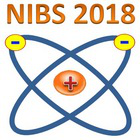Speaker
Dr
Loic Schiesko
(Max-Planck-Institute für Plasmaphysik)
Description
The Neutral Beam Injection (NBI) system for ITER requires large scale sources for negative hydrogen ions. BATMAN (Bavarian Test Machine for Negative Ions) is dedicated to physical investigations due to its flexible access for diagnostics and exchange of source components.
In 2017, several critical hardware components were upgraded (see W. Kraus contribution for details) and BATMAN Upgrade is now commissioned. Among these upgrades, a major change was made on the magnetic filter field (FF): it is now possible to generate the FF by a current flowing through the first grid of the extraction system, the plasma grid (PG). The magnetic field intensity in front of the PG roughly scale as 2 mT / kA, and reaches around 6 mT for a maximum current of 3 kA. This value is comparable to the 4.1 mT resulting from the use of permanent magnets installed in the movable frame when located as close as possible to the PG (2x4, z = 9 configuration, see [1]).
However, the main difference between current and permanent magnets generated magnetic fields is the topology that affects the transport of charged particles from the driver where they are generated, to the PG.
The influence induced by the different magnetic field configurations (but also without FF) on the plasma parameters such as the plasma and floating potential, electron temperature, plasma asymmetry… have been determined by two symmetrically arranged Langmuir probes located in the PG vicinity. Furthermore, pressure and power scans were performed to better quantify the FF role on the plasma parameters near the PG.
Primary author
Dr
Loic Schiesko
(Max-Planck-Institute für Plasmaphysik)
Co-authors
Dr
Christian Wimmer
(Max-Planck-Institute für Plasmaphysik)
Garching IPP N-NBI Team
(Max-Planck-Institute für Plasmaphysik)
Prof.
Ursel Fantz
(Max-Planck-Institute für Plasmaphysik)

